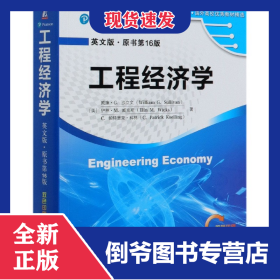很抱歉,该商品可能已下架或被删除
相似商品
-
 工程经济学 英文版·原书第16版全新
工程经济学 英文版·原书第16版全新¥119.47
-
 工程经济学 英文版·原书第16版全新
工程经济学 英文版·原书第16版全新¥116.64
-
 工程经济学 英文版·原书第16版全新
工程经济学 英文版·原书第16版全新¥113.79
-
 工程经济学:英文版全新
工程经济学:英文版全新¥113.93
-
 工程经济学(英文版原书第16版双色印刷)/时代教育国外高校优秀教材精选9787111639589全新
工程经济学(英文版原书第16版双色印刷)/时代教育国外高校优秀教材精选9787111639589全新¥126.76
-
 特价现货!工程经济学(英文版原书第16版)八五品
特价现货!工程经济学(英文版原书第16版)八五品¥16.83
-
 工程经济学(英文版原书第16版双色印刷)/时代教育国外高校优秀教材精选全新
工程经济学(英文版原书第16版双色印刷)/时代教育国外高校优秀教材精选全新¥124.32
-
 工程经济学(英文版原书第16版)(美) 威廉·G.沙立文(William G. Sullivan) 伊林&#8229787111639589机械工业出版社八五品
工程经济学(英文版原书第16版)(美) 威廉·G.沙立文(William G. Sullivan) 伊林&#8229787111639589机械工业出版社八五品¥12.11
-
 工程经济学 英文版·原书第16版全新
工程经济学 英文版·原书第16版全新¥137.08
-
 工程经济学(英文版原书第16版双色印刷)/时代教育国外高校优秀教材精选全新
工程经济学(英文版原书第16版双色印刷)/时代教育国外高校优秀教材精选全新¥119.65
5S 后自动跳转到首页
去首页逛逛